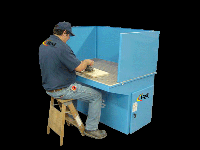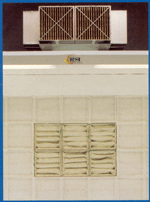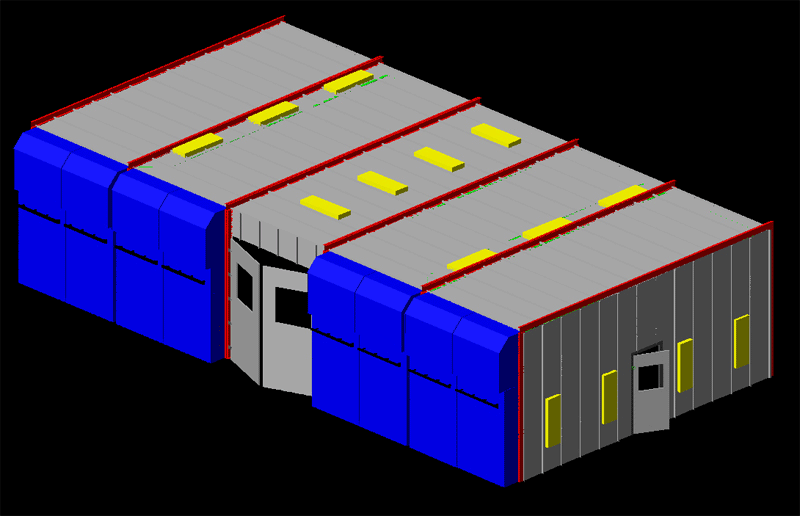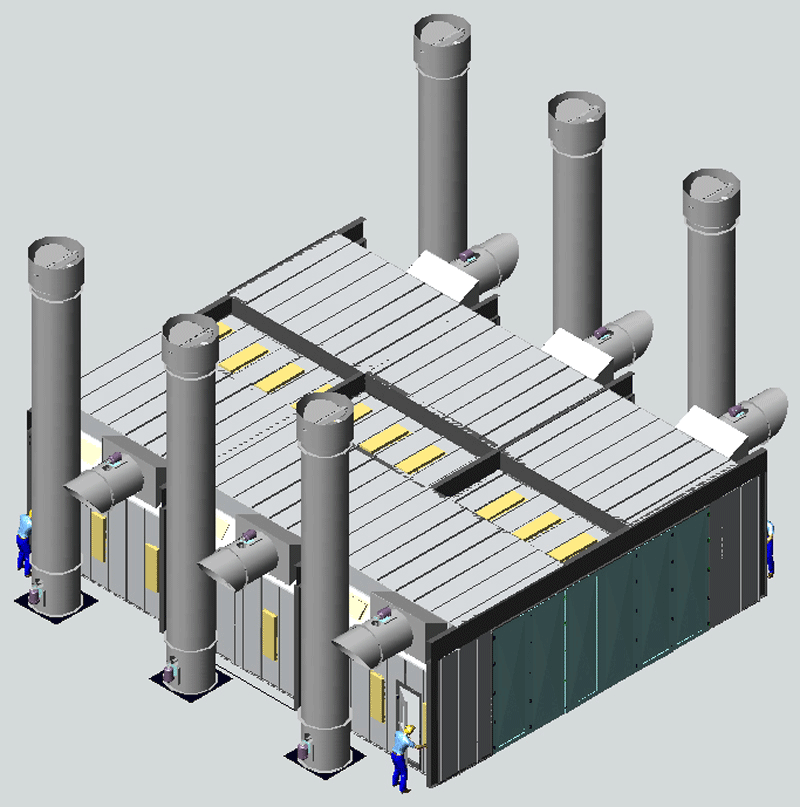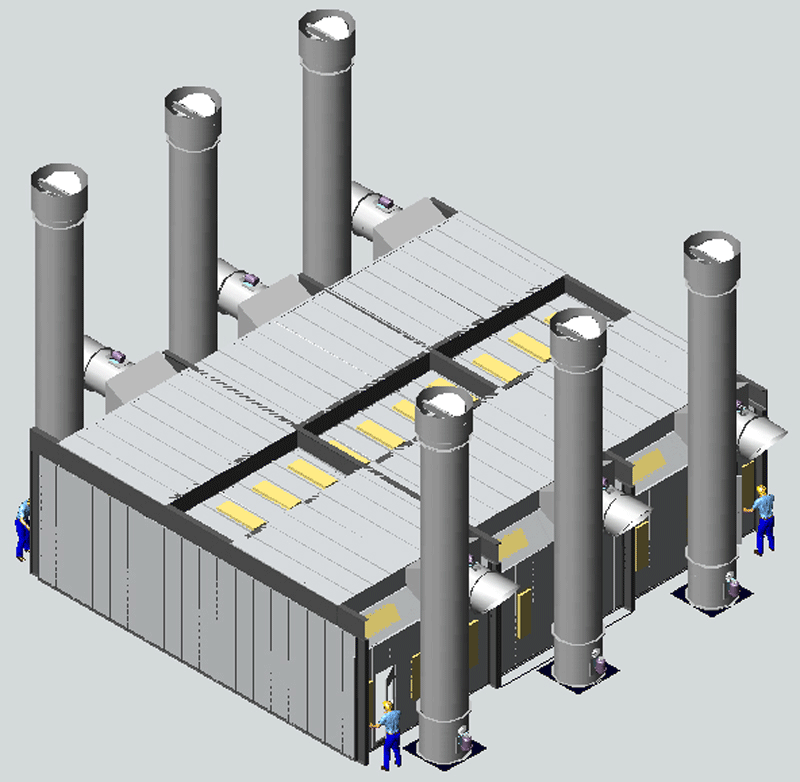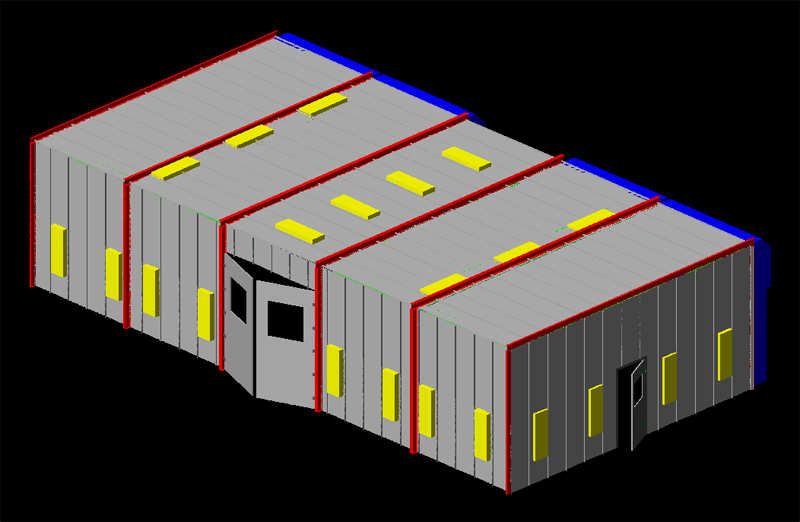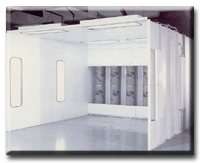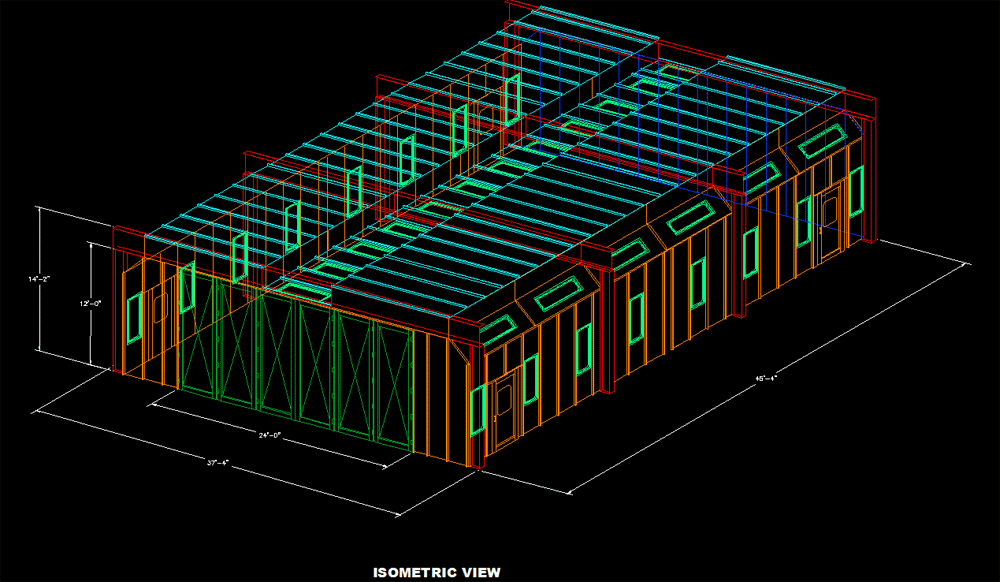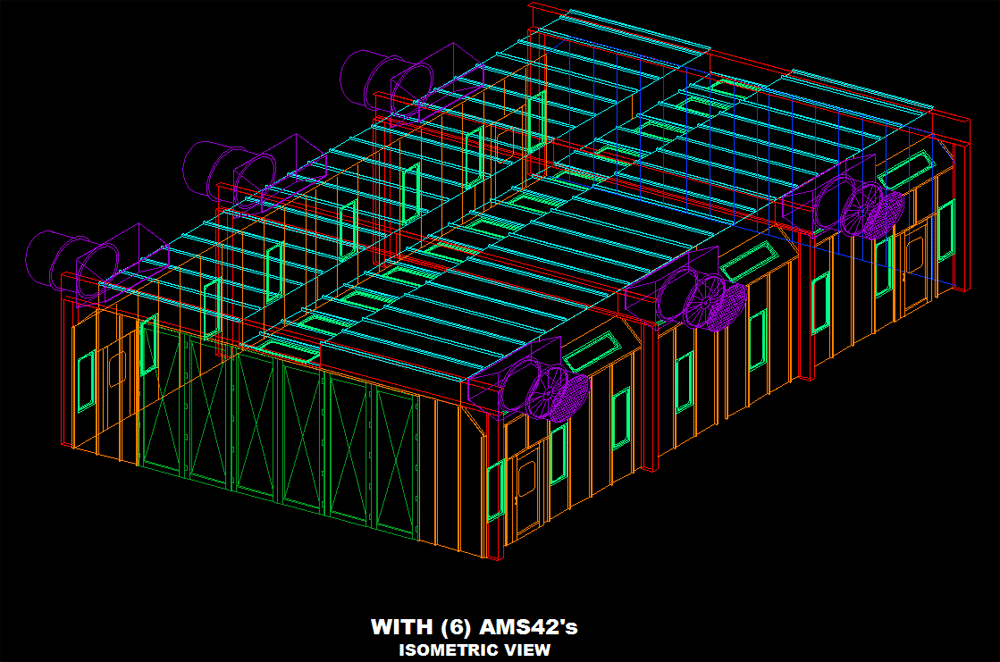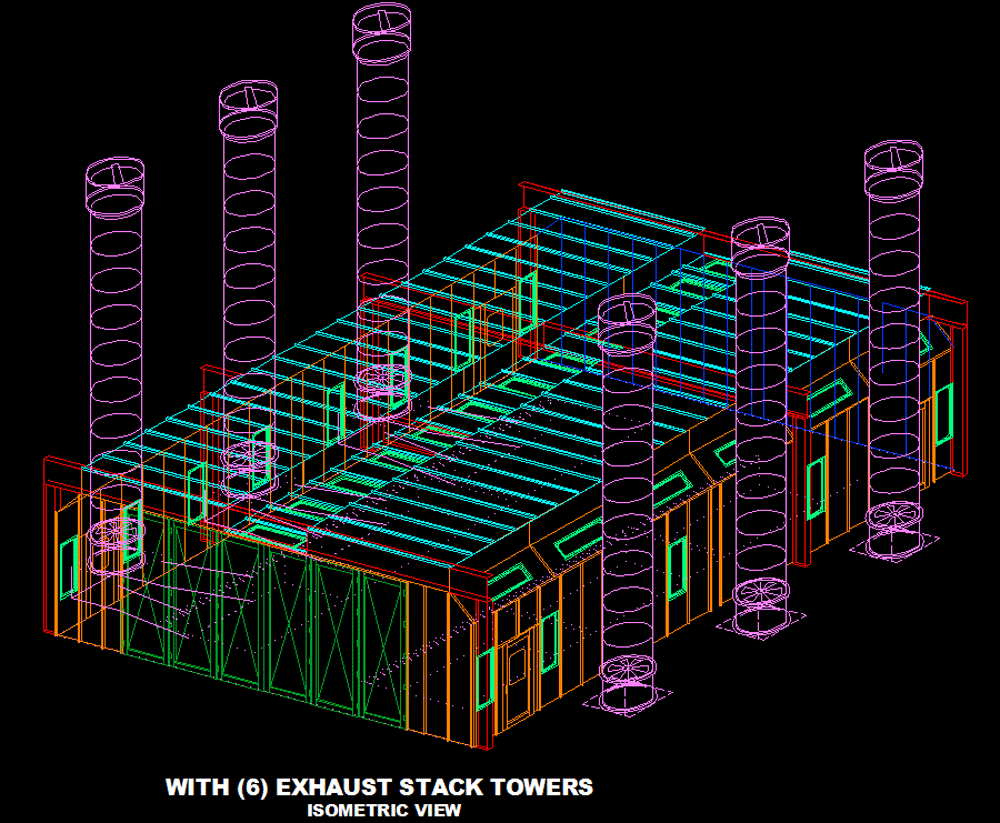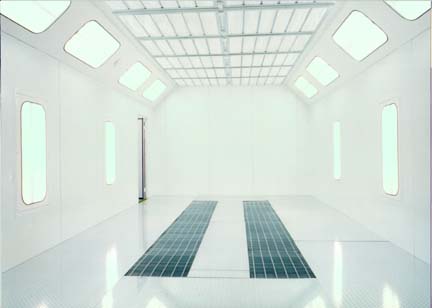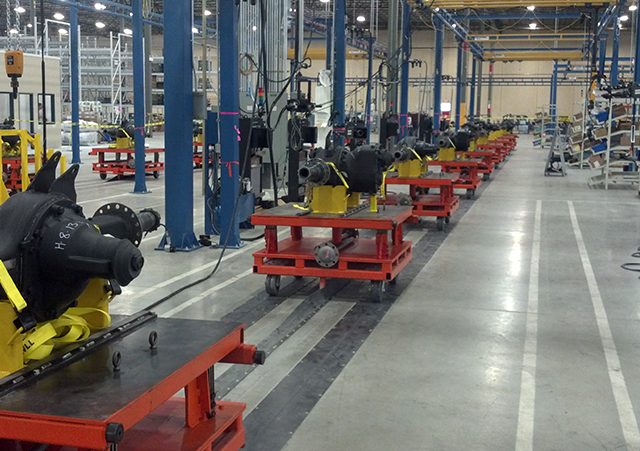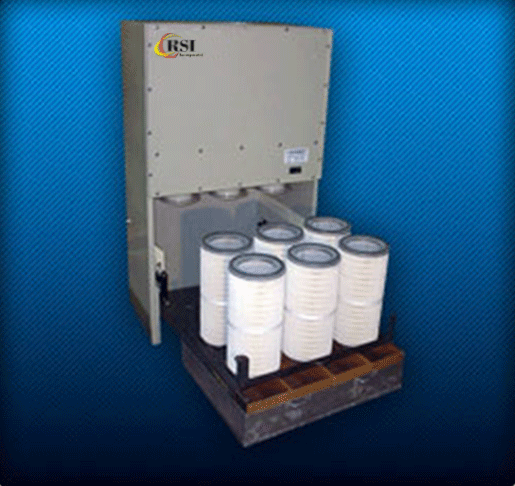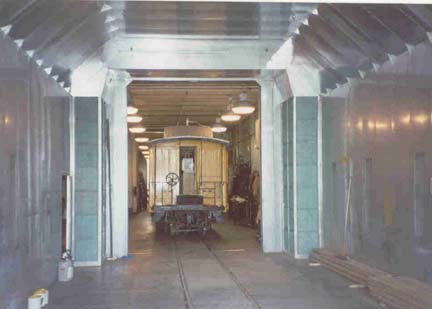Downdraft Tables & Benches.
Item Information
RSI, Inc. offers an outstanding array of configurations, options, and features in downdraft tables and benches, for a whole range of needs: downdraft tables which can be integrated into an existing central dust collection system, or self-contained, stand-alone tables and benches which re-circulate filtered air for energy savings on heating and cooling. For most any sanding, grinding, or welding application, cartridge downdraft tables and benches feature high efficiency, self-cleaning, and optional re-gain air. Also available are panel filter downdraft tables for easy-maintenance and cost-effective performance for fine sanding and finishing operations. For safe capture of aluminum, titanium, and other potentially hazardous contaminants, RSI, Inc. provides wet collector downdraft tables and benches. Complete engineering services are also available to provide custom design for special needs.
General Information
Whether your need is for a continuous or batch system, RSI can assist you every step of the way.
Custom sizes are welcomed for all powder / sanding booths and spray enclosures. These powder / sanding booths can be ordered as an open faced or fully enclosed system, and come in either a galvanized or powder coated finish. Curing Ovens are also available in custom sizes to fit your specific need.
A complete line of filters for powder / sanding booths as well as replacement parts for your application equipment are readily available. New application equipment is only an order away and can be ordered separately or as a complete package. Manual or automatic feed application systems are available.
Because specific applications vary from shop to shop, RSI recommend you talk with one of our sales personnel to find the best option for you.
RSI Sanding Booths provide an excellent method for controlling dust from spreading through the factory. Air is drawn around the product being processed or sanded with a wrapping effect carrying dust and debris away from the face of the operator providing a safer work environment.
The modular construction allows for fast and easy installation. Since it is a recirculating system, there is no exhaust stack, roof opening or exhaust permit required to install the unit.
The RSI Clean Air Sanding Enclosures are designed to reduce the costly expense of replenishing the exhausted air from your facility. These enclosures are specially designed to safely recirculate clean air back into the plant through its cartridge or bag-type filtration system.
The RSI Sanding Booths can be integrated into an existing system or function as a separate unit. The enclosures can be set up in a batch configuration or as a single conveyorized unit. They can be used in a variety of applications, including wood, laminates, metal and fiberglass.
Where budget and production volume are limited, RSI’s pocket filter booths and cartridge modules are an ideal fit. The configurable four foot wide powder coating modules are very versatile in their design and application.
These configurable modules can be connected to expand with your production requirements. These modules utilize a two stage filtering process with a purge system to clean the cartridge filters. The primary filters are the cartridge type and the secondary filters are 99% efficient polyester. These modules can also be ordered as portable units that can be moved between departments or production areas. The modules are constructed of 18 gauge steel and have a powder coated finish.
RSI’s pocket filter booths feature three-stage filtration. The primary filtration is handled by polyester and the secondary filters are a pocket style also of polyester material. The final filtration, before allowing the air back into the work area, is handled by way of condensed paper media. These pocket filter booths can be ordered in either a galvanized or powder coated finis
RSI In-Floor Downdraft Sanding & Grinding Rooms
RSI Sanding Rooms are designed to fit your application, not your application to the room. Whether the product is a large aircraft or a multitude of product components, we will design the room to fit your product.
RSI Downdraft Sanding Rooms are designed with up to 100% filtered air circulation, using either cartridge or multi-pocket bag filters.
RSI Sanding Rooms can be zoned separately by using 80 mil. Fire retardant plastic curtains so personnel can confidently work it their own cells with minimum outside interference.
RSI carefully studies your MSDS coating specifications prior to making filtration recommendations. The amount of turnovers and amount of recirculated air will be determined by these factors. This will reduce the over-all exposure levels to personnel working throughout the room.
A standard rule for many years has been a velocity of 100 feet per minute (FPM). Due to the popularity of down draft spray booths, and the air now moving in a downward direction instead of a cross direction, the velocity of the air must be lower than 100 FPM to achieve desirable effects on a prep & or paint job.
Due to this design change, the NFPA has changed the ventilation requirements of spray booths. In the 2000 NFPA 33, section 5.2, the code states that the ventilation system be “capable of confining and removing vapors and mists to a safe location and is capable of confining and controlling combustible residues, dusts, and deposits. The concentration of the vapors and mists in the exhaust stream of the ventilation system shall not exceed 25 percent of the lower flammable limit “LFL”.”
In section A.5.2, which defines the lower flammable limit, under “Spray Booths”, the code reads, “In general, if vapors, mists, and residues move towards the filters and the exhaust ducts, they will be confined and controlled.”
First we have to figure out the cubic feet that our booth has, this particular booth is 20’wide x 12’high x 20’ long. Our booth also has 45º corners and 45º sloped roof and corners. By calculating all these variables I come up with 4,620 cubic feet. The NFPA 33 Annex B section B.1 calls out a safety factor of 4 to 1 for ventilation requirements.
If we keep the requested 100 FPM then we would have to move (20’ W x 20’ D) x 100=40,000 CFM based on the cross section that the air is moving in this case downwards. Take the total CFM divided by the total cubic feet you get “40,000 ÷ 4,620 cubic feet” approximately 8.66 to 1 air changes per minute. This would be the maximum air changes that you could expect if the air filters were clean and the booth was well maintained. This 8.66 to 1 is far greater than the 4 to 1 ventilation requirements that are called out by the NFPA 33. In fact it over twice the safety factor of 4 to 1, thus meaning that the example in the book using a 1% LFL would allow this booth to have roughly 5.5% LFL. This is over 5 times the allowable LFL for a normal spray booth.
Now if you work the above equation backwards 4,620 cubic feet x 4 which is the minimum required air changes per NFPA 33 = 18,480 CFM. If you went by the code then all you would have to move in this booth for proper ventilation and performance is 18,480 CFM.
The big differences in the two CFM’s 40,000 vs. 18,480 would be the atmosphere inside the booth, in the case of 40,000 it would be very turbulent and the air velocity across the product would be so great ,roughly 700 FPM if the majority of the grating is covered by product or products, that you would have a hard time applying any kind of coating to it. In addition to that the dba of the fans, and just general air movement would be excessive.

